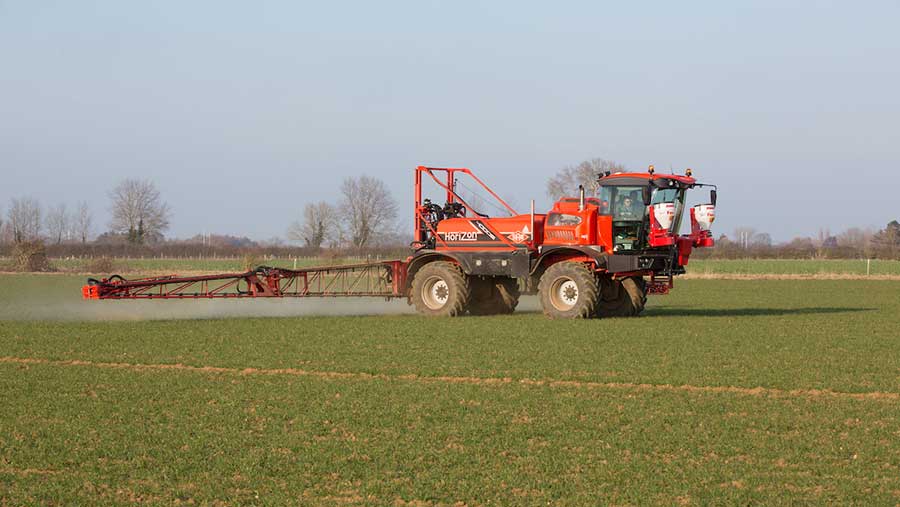New herbicide for autumn broad-leaved weed kill
 © Tim Scrivener
© Tim Scrivener A new mode-of action broad-leaved weed herbicide launched earlier this year could see wheat growers shift back to an autumn approach, hitting weeds when they are still young.
“The reliability of broad-leaf products to perform in cold and variable temperatures has traditionally put a lot of growers off carrying out applications at this time of year,” said Stuart Jackson, Dow AgroScience’s cereals herbicide specialist.
See also: How to tackle herbicide resistance in broad-leaved weeds
“Opportunities to spray are limited and there is plenty of other farm work to do so it often gets left until active growth resumes in the spring.”
However, this puts more pressure on the sprayer in the spring when weeds are well established and can be harder to control, he warned.
Autumn rethink
The emphasis could swing back to autumn sprays with a new active launched earlier this year, having performed well in the tough, dry conditions last spring.
“Our research consistently demonstrates that hitting weeds when they are small leads to better results both in terms of weed control and, ultimately, yield.”
Zypar (halauxifen + florasulam) contains the synthetic auxin active halauxifen, the first new broad-leaved herbicide active in 20 years, which is effective over a wide range of temperatures.
It targets key problem weeds such as poppy, chickweed, cranesbill, groundsel and brassica weeds.
But given the limited opportunities for sprayers to travel, Mr Jackson advised tank mixing with a compatible mix partner.
“Zypar can be added to residual herbicides that are targeting grassweeds such as pendimethalin and flufenacet,” he said.
The maximum rate that can be applied before 14 February is 0.75 litres/ha.

